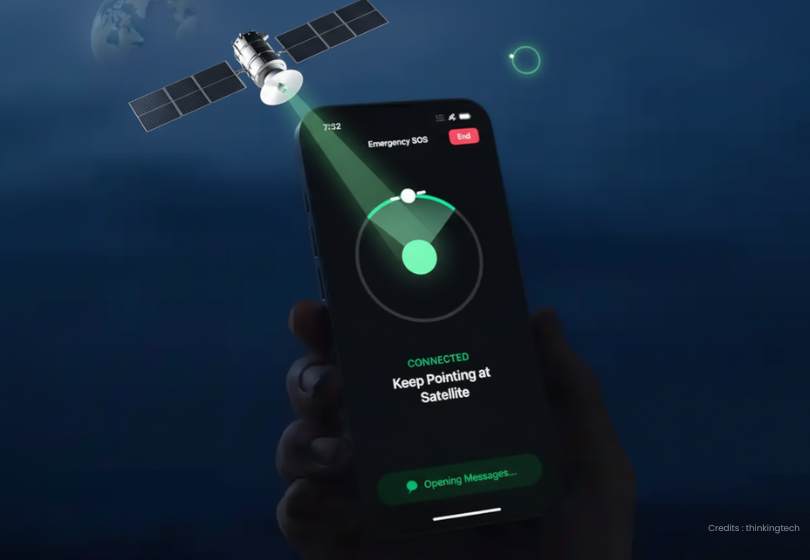2025 is turning into a big year for iPhone users. Fresh reports hint that Apple is quietly building the next generation of satellite-powered features for iPhones. This goes far beyond the current Emergency SOS via Satellite introduced with the iPhone 14. If all goes as expected, your iPhone might soon stay connected even when cellular networks completely fail.

Let’s break it down.
Apple’s Emergency SOS via Satellite lets users send short, guided text messages to emergency services when there’s no signal or WiFi.
The next evolution looks far more ambitious:
• Satellite-powered Apple Maps navigation even without mobile data.
• Image sharing in Messages via satellite, not just text.
• More natural connectivity without pointing your phone awkwardly at the sky.
• Third-party satellite APIs, enabling apps like WhatsApp, location-sharing tools, or travel apps to function in remote zones.
Apple’s satellite partner is Globalstar, and reports suggest Apple is investing in new infrastructure to enable these features. Some capabilities might eventually be free, while others may require subscription-based access.
Important point: these features are in development, and may take years to roll out globally.
Trekkers in Leh-Ladakh, road trippers on remote highways, or travellers at sea stand to gain. Your iPhone may stay usable even in network black holes.
Sharing images and location during emergencies without signal could be life-saving.
Imagine accessing full Apple Maps navigation offline through satellite. Huge advantage for travellers and rural regions.
If developers get access to satellite APIs, your normal chat or tracking apps can work even with zero bars.

Most Android OEMs rely on traditional networks. Satellite-first features give Apple a massive differentiator.
Premium satellite plans or bundles could bring recurring income, similar to iCloud and AppleCare.
Satellite APIs for developers strengthen the Apple ecosystem and make switching harder.
Regions with unreliable mobile infrastructure may find this more valuable than 5G upgrades.
• Massive infrastructure costs: Satellite networks aren’t cheap to build or deploy.
• Regulatory hurdles: Many countries tightly regulate satellite-to-mobile communication. India will require approvals from TRAI and spectrum authorities.
• Hardware constraints: Some features may only work on newer iPhones.
• Latency & battery drain: Satellite links can be slow or power-hungry.
• Regional rollout: Apple may launch in limited countries first, delaying availability for Indian users.
India might actually be one of the biggest beneficiaries of this shift — eventually.
• Remote zones like the Himalayas, Northeast, deserts, coastal areas often suffer poor network reliability.
• Indian travellers increasingly explore offbeat routes where connectivity is an issue.
• Several emergency and health apps could build India-specific features using satellite APIs.
• Carriers like Jio, Airtel and BSNL may need new agreements with Apple or satellite providers.
• Pricing will matter a lot. If satellite features cost too much, mass adoption will be slow.
Expect some delay in rollout due to regulatory approvals, hardware compatibility, and carrier integrations.
• Official announcements about supported iPhone models and countries.
• Developer-focused satellite APIs in iOS updates.
• Possible carrier bundles that combine cellular + satellite failover.
• Hardware upgrades in future iPhones for more stable satellite performance.
• A new mobile paradigm: offline-but-online, where your phone stays functional even without towers.
For years, smartphones have been dependent on mobile towers. Apple is trying to break that limitation by tapping into satellites orbiting the Earth. If Apple pulls this off at scale, it could redefine mobile connectivity, especially in remote or underserved regions.
For Indian users, the promise is huge — safer travel, frictionless navigation, and always-on connectivity — but the rollout timeline and pricing will decide real-world adoption.
At ThinkingTech.in, this is one trend we’ll be tracking closely. As soon as Apple confirms specs, supported regions, and pricing, we’ll bring you the deep-dive you need.
No Comments